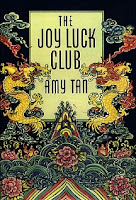Ø Henrik Johan Ibsen
A major 19th-century Norwegian
playwright, theatre director, and poet. He is often referred to as "the father of realism" and is one of the founders of Modernism in
theatre. Ibsen's later work examined the realities that
lay behind many façades, revealing much that was
disquieting to many contemporaries. It utilized a critical eye and free inquiry into the conditions of life and issues
of morality. The poetic and cinematic early play Peer Gynt, however, has strong surreal elements. Ibsen
is often ranked as one of the most
distinguished playwrights in the European tradition. Richard Hornby
describes him as "a profound poetic
dramatist—the best since Shakespeare ".
Ø A doll’s house (玩偶之家)
The
play is significant for its critical attitude toward 19th-century marriage norms.
It aroused great controversy at the time, as it concludes with the protagonist, Nora, leaving her husband and children
because she wants to discover herself. Ibsen was inspired by the belief
that "a woman cannot
be herself in modern society," since it is "an exclusively male society, with laws made
by men and with prosecutors and judges who assess feminine conduct from a
masculine standpoint." Its ideas can also be seen as having a wider
application: Michael
Meyer argued that the play's theme is not women's rights, but rather "the need of every
individual to find out the kind of person he or she really is and to strive to
become that person." In a speech given to the Norwegian Association
for Women's Rights in 1898, Ibsen insisted that he "must disclaim the honor of having consciously
worked for the
women's rights movement," since he wrote "without
any conscious thought of making propaganda," his task having been "the
description of humanity.”
Ø Flip-flop ( it’s summer in
Washington… …)
Ø Skintern
In
American workplaces, a skintern is an informal term for a summer intern,
usually female,
who dresses in clothing more revealing than that which is common for the field
in question.
The phenomenon is sometimes a deliberate sartorial strategy, but more often is believed
to result from ignorance of accepted professional dress standards. Older women
in the offices where those interns work have often responded by advising them
on how to dress more appropriately. Some feminists, however, have seen the term
as yet another symptom of inherent sexism in the workplace, since it is
so widely applied.
Ø Herman Melville (an
humanity)
Herman Melville (August 1, 1819 –
September 28, 1891) was an
American novelist, short story writer, and poet of the American Renaissance
period best known for Typee (1846), a romantic account of his
experiences in Polynesian life, and his whaling novel Moby-Dick
(1851). His work was almost forgotten during his last thirty years. His writing
draws on his experience at sea
as a common sailor, exploration
of literature and philosophy, and engagement in the contradictions of American society
in a period of rapid change. He developed a complex, baroque style: the
vocabulary is rich and original, a strong sense of rhythm infuses the elaborate
sentences, the imagery is often mystical or ironic, and the abundance of
allusion extends to Scripture, myth, philosophy, literature, and the visual
arts.
Ø Description
Description
is one of four rhetorical
modes (also known as modes
of discourse), along with exposition,
argumentation, and narration. Each of the rhetorical modes is present in a
variety of forms and each has its own purpose and conventions. The act of description may be
related to that of definition. Description is also the fiction-writing mode for transmitting a mental image of the
particulars of a story.
Definition: The pattern of development that presents a word picture of a
thing, a person, a situation, or a series of events.
Ø Prescription
Something that is suggested as a
way to do something or to make something happen
Ø I wandered lonely as a cloud
(use personification a lot)
I
wandered lonely as a cloud
That
floats on high o'er vales and hills,
When
all at once I saw a crowd,
A
host, of golden daffodils;
Beside
the lake, beneath the trees,
Fluttering
and dancing in the breeze.
Continuous
as the stars that shine
And
twinkle on the milky way,
They
stretched in never-ending line
Along
the margin of a bay:
Ten
thousand saw I at a glance,
Tossing
their heads in sprightly dance.
The
waves beside them danced; but they
Out-did
the sparkling waves in glee:
A
poet could not but be gay,
In
such a jocund company:
I
gazed—and gazed—but little thought
What
wealth the show to me had brought:
For
oft, when on my couch I lie
In
vacant or in pensive mood,
They
flash upon that inward eye
Which
is the bliss of solitude;
And
then my heart with pleasure fills,
And
dances with the daffodils.
Ø Vocabulary
l Solitude (單一):
The state of being completely alone, especially when this is pleasant or relaxing
Ø dic = to say, to tell, words
l Diction:
the way that you pronounce words,
especially whether or not you speak or sing clearly
l Sarcasm: the
activity of saying or writing the opposite of what you mean, or of speaking in
a way intended to make someone else feel stupid or show them that you are angry
l Fragile:
easy to break or damage



























